A while ago, a friend suggested a silly game on Facebook – I don’t know how it came to him – to name a favourite film for every year since you were born. It was fun and silly and wasted a good amount of time and spawned a good amount of discussion. Given how much I like a list, and given how much I like to talk about music even more than I like to talk about movies, I thought a similar game could be played with records.
Of course, choosing a single favourite is impossible and absurd. I set to the task with gusto and went year by year, noting every album I found interesting, that could possibly be a contender. In the end I had a list of just under a thousand albums covering 47 years of life. You do the math…
Anyway, I decided to whittle each year down to ten on the basis of what I enjoyed the most and what I felt that I would want people to listen to, if they hadn’t already checked this or that artist out. I will stress, therefore, these are not claimed to be the best albums of any given year, or even necessarily my favourites (they are liable to shift and change). But they are close to my favourites – at least they are right now.
I hope that you enjoy this ridiculous task as much as me, and I would love to know what albums you agree with, or disagree with, or would include instead.
Let’s begin with the year of my birth, 1970…
Funkadelic – Funkadelic
Holy cow, this is an incredible album and it never fails to make me happy. It was introduced to me in 1990 by a man called Frank. This is not the time to go into detail, but Frank was a seer when it comes to music. To say that he was ahead of the curve was an understatement, especially when we recall that there was no internet etc. Who knows where Frank is now, but I hope he is well. If I meet him, I will thank him for introducing me to this album.
In 1990 I had no idea what funk music was and given the variations within the genre it is forgivable to be uncertain, but this has only a faint family resemblance to the godfather, James Brown. It’s not even that close to what George Clinton’s various bands would become at the end of the decade (P-funk etc.). Instead it is a murky, swampy, acid-drenched smudge between soul, funk, rock and the blues. It’s not a million miles away from Gris-Gris era Dr. John, Electric Ladyland Hendrix or even the looser end of The Doors but with a massive dollop of Sly Stone thrown in.
Each track has a groove as deep as the Mariana Trench. When I listen I want to sing along, move, slap, rejoice in this bewildering, carnal, profane world. What is soul?, they sing – a joint wrapped in toilet paper, rusty ankles and ashy kneecaps, a hamhock in your cornflakes. Who know? They don’t know either. But if I was to recommend one album from the year of my birth, this would be it.
Black Sabbath – Paranoid
I cannot remember when I first heard Sabbath. My mother had a tape copy of Sabbath Bloody Sabbath. My uncle, a large scale provider of metal in my early teens, wasn’t too keen – he preferred NWOBHM; I can’t recall him ever sharing anything with me. I know that I bought a copy of Live at Last – I was probably around 13 – so they must have made an impression. But it wasn’t until my friend Ezzy loaned me a cassette copy of Paranoid in 1989 that I finally understood.
When the most boring song on an album is also the most famous single, not just of the album, but of your whole career, then there is a good chance that this album is something pretty special.
I encourage you to sit and listen to any single song on that album, and listen closely to the three principal instruments; drums, bass and guitar. The drums are pounding – not quite as heavy as John Bonham, but they provide the rhythmic bottom line. They, more than anything else – even Iommi’s heavy heavy riffs, underline the industrial factory tone that Sabbath said was the inspiration and imprint for the sound they were to create. They are sophisticated, switching the rhythms around, flipping from drum/snare/hi-hat to toms, mixing up the variations. The bass reveals Butler’s tradition in the jazz/R&B groups of his youth. Where heavy metal later became a vehicle for masturbatory guitarists, bass players like Geezer Bulter’s followed the Who’s John Entwistle in keeping very very busy. As soon as Butler is freed from service of the riff (as in Electric Funeral), he’s off and providing an endlessly fascinating bottom line that is always responding to Bill Ward’s drumming. And then there’s Tony Iommi – one of the greatest guitar players in all of rock and much like Butler and Ward under-rated even when he’s being praised. His riffs are legendary, and his solos do exactly what they need to do – and no more. Finally, on top of it all, there’s Ozzy. Never the greatest singer or lyricist, but coupled with such a backdrop we find that his limitations become strengths.
Any of the first four albums by Sabbath are worth a listen, but if I had to choose one – it would be this one.
Donny Hathaway – Everything is Everything
Donny Hathaway is one of the most tragic figures in 1970s soul. Classically trained, worked with everyone from Franklin to Mayfield to Motown and most famously Roberta Flack. However, he struggled with mental illness and committed suicide in 1979 cutting short an incredible career.
His albums have a richness of textures and structures that is uncommon in soul. He draws on classical, jazz, latin influences to create a much more layered music. Nonetheless, this does not suck the life out of the music – it’s as funky as Mayfield and has as much soul as Stevie – just check out the opening to the first track, Voices Inside – deep groove with the most uplifting horn arrangement.
The album is stacked full of monster tracks. I Believe To My Soul is blues rhythm, with Stevie Wonder flourishes, huge brass blasts – a chorus line that is somewhere between Abbey Road and Hey Joe. Unsurprisingly, this is written by Ray Charles but the arrangement is to die for. Sugar Lee is halfway between jazz and campfire riffing – all shouts and handclaps. Young, Gifted and Black – one of Nina Simone’s most famous tunes gets an extended gospel work-out.
The star of the show is probably Hathaway’s most famous: The Ghetto (everything is everything). It reflects Donny’s Latin influences most plainly and has the deepest groove; dangerous, uplifting. Cool as anything – just like Donny.
The Stooges – Fun House
Legendary second album from Iggy and the Ashton brothers. A move forward (backward?) from the John Cale produced debut with the avowed intention of capturing The Stooges as they were live. Ex-Kingsmen Paul Gallucci is brought in to record the unrecordable. Seven songs of brutality and violence, sheer unbridled rock’n’roll. If this doesn’t make you want to shout, move and break things, you’re already dead.
The three opening songs – Down on the Street, Loose and TV Eye – break down all defences. They are relentless, pushing through any reservations. Their power is their determined simplicity. There is nothing sophisticated here. Nothing. Just power – raw bloody power. Jack White describes this as ‘the greatest rock’n’roll record ever made’ and these three songs set out to prove it. More punk than punk – a hurricane of blistering riffs. Dirt is a seven minute grind. Psychedelic and anti-hippy. The summer of love was three years ago, baby. This is a come down set to music. Brooding, sexual – almost jazzy. It is primal energy slowed down to a dangerous hum.
Brian James of The Damned describes the opening of 1970 has ‘pure bloody mayhem’. He should know, The Damned’s cover version is almost as good and while it is close to as insane, it lacks the insanity of the original. Fun House and L.A. Blues finish the set with sustained brutishness. Fun House has a Detroit factory line for a rhythm and beats the listener into submission, whereas L.A. Blues abandons even rhythm – it is just noise and madness…
Curtis Mayfield – Curtis
If Curtis Mayfield had decided to call it a day in 1970, if he had decided to quit the music business and become a gardener or a goat-herder or something, he would have already earned his place in the pantheon. During the 1960s, he had formed one of the best soul vocal groups, The Impressions, written some of the greatest songs, given an invaluable leg up to a multitude of musicians and formed his own record label, Curtom. But in 1970, Curtis had left his group and gone solo, releasing the first in a series of groundbreaking albums.
What made these records so important was a vital combination of warmth and humanity, social consciousness, and first rate musicianship. We could debate whether this is his finest record, or Roots or Superfly – it doesn’t matter. This is a masterpiece. Any album that opens with (Don’t Worry) If There’s Hell Below We’re All Gonna Go is going to be something special. Lyrically it is devastating – shocking even – in unrelenting condemnation. But the instrumentation; distorted bass, percussion, wah-wah guitar, great horn lines and psychedelic flourishes. Nothing can stand in its way.
And the album does not let up. Perennial classic Move On Up is track 5, back where things might be forgiven for being a little relaxed after such a strong start. But no, Mayfield is not giving up. Nothing compares to this.
The Velvet Underground – Loaded
You could argue that there were two Velvet Undergrounds. There was the envelope pushing Velvets with Cale and Sister Ray. And then there is the other Velvets, the one with the songs. An interesting debate could be had which of these two incarnations were better or more influential. I love them both, so I am not going to get embroiled, but this album – the 4th and final – is definitely of the second type.
Loaded has some of the best songs that Lou Reed ever wrote. I don’t think that it is the most progressive or intense. Reed had largely abandoned the album in exhaustion and so Doug Yule had finished the album off in his absence. All the same, Reed’s song writing was on an incredible high. Obviously we have the classic Sweet Jane, but alongside it there’s Rock’n’Roll, Oh Sweet Nuthin’, I Found a Reason. None of these are Reed’s most famous songs, but all of them could have been. One of my favourite songs full stop is New Age. It is a fascinating story within the song, but it is also heartbreakingly beautiful in its own way.
Of all the albums listed here, I probably have the least to say about this one. I think it just has the best songs.
Syl Johnson – Is It Because I Am Black?
Man, Syl Johnson was unlucky! He worked hard in the 60s, making a name for himself. He established Twinight Records, produced some great artists, and a series of his own knockout albums, including this one. In 1973 he signed to Willie Mitchell’s Hi-Records, expecting to be the label’s next big thing. Just as Al Green took off…
Consequently, he remains in the second tier of Soul’s heroes, unknown to the general public. This is a massive injustice as he was awesome. He produced a few incredible albums on both his own label and Hi, but you could make a strong case for this being the best. It contains the best of both Chicago and Memphis. The song-craft and the arrangements have a Northern quality, but the pace and the mood is Southern.
The album is framed between two longer workouts. The opening title track is a deep lament, which must have reflected a reality for black men in the US and beyond that was immediately recognisable. The lyric is heartbreaking but the groove is soulful; marrying the sadness of the blues with the persistent optimism in spite of it all of deep soul. The album closes with Right On, a scrappy funky strut. It answers the former track with a determination and call for togetherness. Between these two tracks are eight incredible late-60s, early 70s deep soul cuts from the cover of Come Together to the gorgeous Everybody Needs Love. Awesome.
Bill Fay – Bill Fay
Where to start with this oddity? Bill Fay was a British singer-songwriter in the late 60s who was pitched in a sort of Dylan mould. Except he wasn’t. There was a single Some Good Advice released in ’67, that had a Dylan-ish quality, but by the time we reach this album, it was a real stretch. British psychedelia had come and gone, but something lingered on so Fay’s curious, provincial poem-songs were matched by the lushest, most expansive baroque orchestral arrangements – huge amounts of brass and woodwind. The overall effect is beautiful if jarring. It is an album that is peculiar if intriguing on first listen, but with return visits it is eternally rewarding. Over the years I have played it for a few people. Often the first response is mild, not unpleasant, bemusement. But this typically gives way to an openness to Fay’s weird vision.
Garden Song opens without much pomp, but at the end of the first verse the listener is swept up in a vivid swoop of strings that lists the song up and whisks it away somewhere else. Narrow Way is the most baroque. We Have Laid Here is driving forward, the most rock of the album, but… It is followed by Sing Us One of Your Songs May, a haunting conversation that could have been the 1940s. Just a simple, repetitive poem placed above a heavily reverbed piano.
This album, like so many, dropped off the radar almost as soon as it was released (Fay did release a follow up in ’71). However, it is one of the most prominent of the revivals of ‘lost’ albums and has since been championed by David Tibet and Jeff Tweedy.
Isaac Hayes – To Be Continued…
The title of this album should give a pretty clear sense of itself. It follows very much in the vein of its two immediate predecessors, Hot Buttered Soul and The Isaac Hayes Movement. While the first of those remains my favourite, this is a close second. Again we have a series of lushly orchestrated, lengthy adaptations of a series of classic song songs; You’ve Lost That Lovin’ Feeling by Mann/Weil, Runnin’ Out of Fools by Kenny Rogers, Our Day Will Come popularised by Ruby and the Romantics. But the pick is Bacharach & David’s The Look of Love. Hayes extends it to 11 minutes of seductive glory. You’d think that at that length it might overstay its welcome. No – Hayes by this point is a master at wringing every drop of drama and emotion out of these 2 and a half minute songs. Not a moment is wasted. Alongside the other master, Barry White, Isaac Hayes is genius at marrying lush, sophisticated arrangements to close, sweaty, intimate grooves.
Aretha Franklin – Spirit in the Dark
For my final selection, I chose this often overlooked Aretha Franklin classic. It’s not surprising that it is overlooked, it almost appears like it is overlooking itself. The cover is so subdued – Aretha is slipping into the darkness of the background. The music, on the face of it, is also subdued. There is little of the high octane push of ‘Think’, ‘Save Me’, or even the overt bombast of ‘Natural Woman’. The mood here is restrained. Even the lead track, the excellent Don’t Play That Song, feels like its hold back. Aretha in ’67 might have caused it to self-combust, but here it is cooler. This is not to say muted or squashed, but that the emotion is under the surface, deeper.
And it flows. The feel of the album is more church, more blues. There is a nice mix of groove and rhythm, call and response. The album moves like the tide – pushing and pulling you along. The title track mixes the sacred and the profane – which spirit does she mean? This ambiguity is at the heart of much of Aretha’s music, I think, but here it is even less obvious than usual, especially when it hits a Gospel breakdown in the second half.
It would be fair to say that this is not the most striking Aretha album, but it is solid and deserving of our attention. It is a traditional album but that isn’t any bad thing.
All the same, people often talk about soul music like it’s a 60s thing, but if one thing should be taken from this list, it’s that the genre was just getting started.
Other Albums considered…
I listened to a bunch of albums in writing this. (It’s always a massive pleasure.) While I had to make a selection and thus exclude a bunch of records, I wanted to just give a shout to some that might, on a different day, have made the list.
John Lennon – Plastic Ono Band offers a fascinating, if over-wrought, snapshot of the ex-Beatle in a stripped back fashion. Steeleye Span – Hark! The Village Wait is a fascinating debut. It is harder and more vital in many respects than Fairport and yet so deep into traditional English and Irish folk. Nick Drake – Bryter Later is another selection of deeply beautiful songs with a fuller, more dynamic arrangement than his debut. Simon & Garfunkel – Bridge Over Troubled Water is perhaps over-wrought, over sweet, but Paul Simon’s songwriting and Garfunkel’s singing is never not incredible. Perhaps the album that I am saddest about missing out is Elton John – Tumbleweed Connection. If you ever needed a reason, or a starting point, for reassessing Elton John, here it is. There are no well known singles here. There is no flash or pizzazz. It is simply 10 excellent songs, performed by top-knotch musicians.
Onwards into 1971 now…
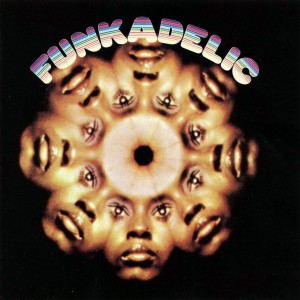
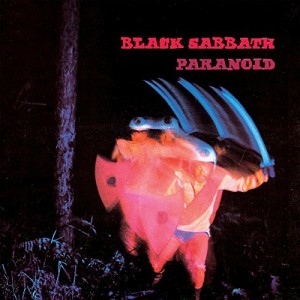
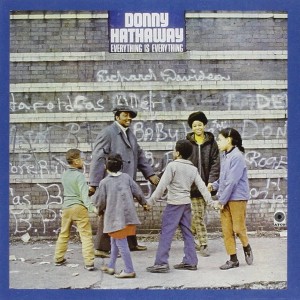
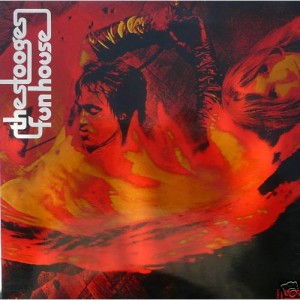
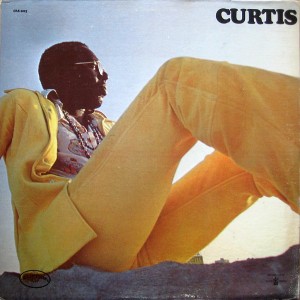
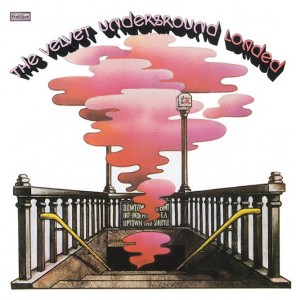
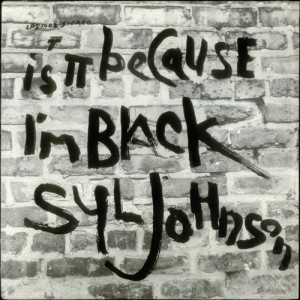
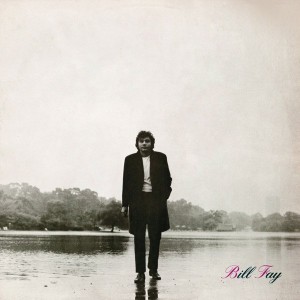
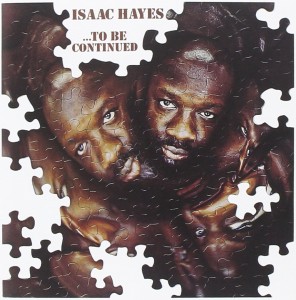
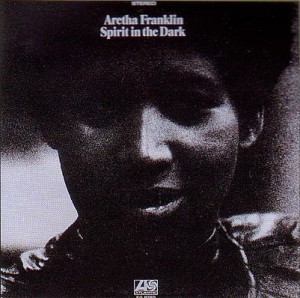
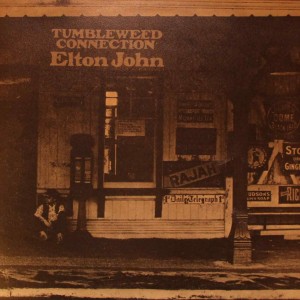
What an interesting article – sent me off into deep areas of my brain to recall some of the albums and to make notes to look out the others.
Though how anyone can even consider a Velvets studio album when there are live albums to play is a mystery! Got 1969 on right now.
Wow, this is like eating a rich fruit cake. No way I could possibly digest this in one go. I’ve revisited this article several times, dipping in and out of the suggestions. It really has opened up a new world to me – the Elton John album is intriguing. His style reminds me of The Band, and that kind of country/rock sound that was doing the rounds in the 70s of which I’m only vaguely aware of!
Thank you both for the kind and deeply encouraging words.
Believe it or not, Ross, but despite listening to the Velvets for nigh on 30 years, I don’t think I have ever listened to one of their live albums. I will have to rectify this oversight.
Elton John is fascinating thing. I neglected him for a long time until this album. Since then I have come to love the first half dozen albums.
I have really enjoyed writing these pieces (along with 1971). I am already thinking about ’72. I don’t know what the regularity will be, but I hope approx one a fortnight or so, until I hit the present. Or something….
Thank you again!